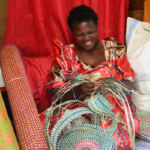As we head into the 24th International AIDS Conference, we highlight in this blog post how COVID-19 has impacted HIV programming, research and practice with a focus on selected elements directly relevant to programs.
The disruptions caused by COVID-19 significantly impacted HIV research and evidence generation. As we elaborate below, research funding was more likely to be secured if it was related to COVID-19. Additionally, in some resource-rich countries, COVID-19 engendered a race for vaccine development and rapid research into development of therapeutics. Hence, journals and publishing houses rightly prioritized manuscripts addressing COVID-19. All of these led to rapid advancements in COVID-19 science and practice, but other items on the research and evaluation agenda such as HIV had to give.
Research practice
Despite the challenges above, COVID-19 ushered in new research interests in three areas: basic, clinical and implementation science.
In basic science, the similarities and differences of COVID-19 and HIV prompted many questions. Researchers wanted to know if persons living with HIV were at a higher risk of severe COVID-19 or if there could be some protective factors including from the antiretroviral medications being used. In clinical science, the course of illness in persons living with HIV was a subject of keen interest. Starting out with limited data and limited populations to draw inferences from, clinical scientists published case studies which later became cohort studies as the population of persons living with HIV who became infected with COVID-19 grew. We were at an HIV-focused conference earlier this year when a researcher was proudly introduced as a coronavirologist – not a new sub-discipline but certainly one which has found new identity. COVID-19 also impacted implementation science. Where HIV is concerned, programs sought to introduce ways to ensure uninterrupted services to persons living with HIV despite COVID-19 disruptions. Implementation scientists then focused on examining which approaches were more efficient in achieving higher impact in HIV control despite COVID-19 challenges.
It is thus fitting that sessions at the AIDS 2022 conference will be devoted to presenting some implementation science around COIVD-19 and HIV. The session – Resilience: The new normal? (Friday 29 July) – is one such session. Other sessions such as Pandemics: Living with HIV during COVID-19 (Sunday 31 July) present findings from behavioral science studies of how COVID-19 impacted people living with HIV. AIDS 2022 will not feature a lot of basic science at the intersection of HIV and COVID-19 but there is no doubt the COVID-19 has had its impact on HIV science.
Evidence sharing
As the pressure to quickly publish grew, preprint publications became a thing. It is reported that as high as 40 percent of COVID-19 publications were first published as preprints. Peer review processes were affected as journal reviewers got overwhelmed during the lockdown, further weakening the rigor with which manuscripts were evaluated and the quality of the resulting evidence. Whether as preprints or peer-reviewed journal articles, retractions of shared evidence also rose with COVID-19.
Vaccine research
If nothing else is positive about COVID-19, the success of these HIV vaccine efforts would be the silver lining. COVID-19 vaccination efforts have also helped ministries and donors rethink adult vaccination and the infrastructure used to rollout COVID-19 vaccination in resource-limited settings could be used to rollout vaccines and treatments for emerging or re-emerging infections such as monkeypox.
HIV, COVID and development financing
The pandemic hit at the time of seventh replenishment for The Global Fund. Failure to meet the funding targets risked non-achievement of the UNAIDS 95-95-95 goals and ending TB, Malaria and HIV by 2030. Nonetheless, the long-term impact of COVID-19 on development assistance for health is still uncertain but there seems to be general agreement that the impact of COVID-19 will affect funding in ways beyond what we can immediately see. A review of development assistance, government, out-of-pocket, and other private spending on health for 204 countries and territories, 1990–2050, paints an optimistic picture overall but poor countries and the most vulnerable could fare worse from the widening disparity in access to vaccines and therapeutics and now being worsened by global increase in prices.
Conclusion
The COVID-19 epidemic brought significant disruptions to HIV service delivery, underlying supply chains, access to HIV services and funding of the HIV response. However, HIV programming responded with resilience and innovation on many fronts. The gathering this year at AIDS 2022, presents an opportunity to share and to learn, how this resilience has played out in different corners of the globe.
Photo credit: Rapeepat/Adobe Stock

See Research in Action
FHI 360 at AIDS 2022


